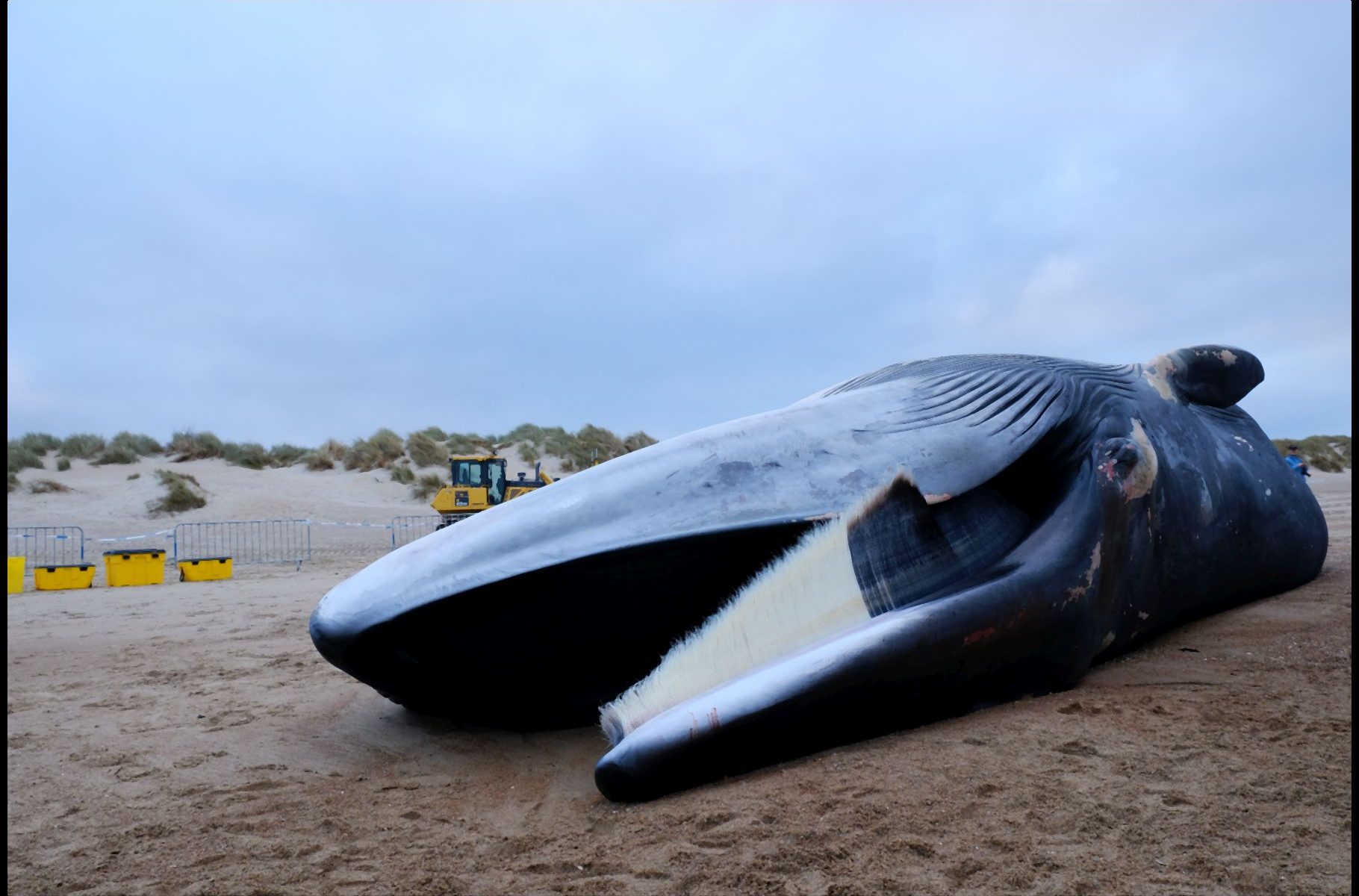The fin whale that was beached in De Haan on 25 October probably died a natural death. This became evident from the autopsy by the universities of Ghent and Liège and the Royal Belgian Institute of Natural Sciences.
The veterinarians and biologists found no evidence that the whale died from human factors. The Fin whale (Balaenoptera physalis), an almost fully grown male of 18 meters long and estimated at 30 tons, was very emaciated and its stomach was almost empty. Additional analyses for the presence of some known viruses were negative.
Story of the Stranding
The dead fin whale was spotted on 24 October in the Belgian part of the North Sea. Because the carcass was floating in a busy shipping route, the maritime services kept some of their ships alternately near the animal and the traffic centre of Zeebrugge sent out a general warning to keep ships at bay.
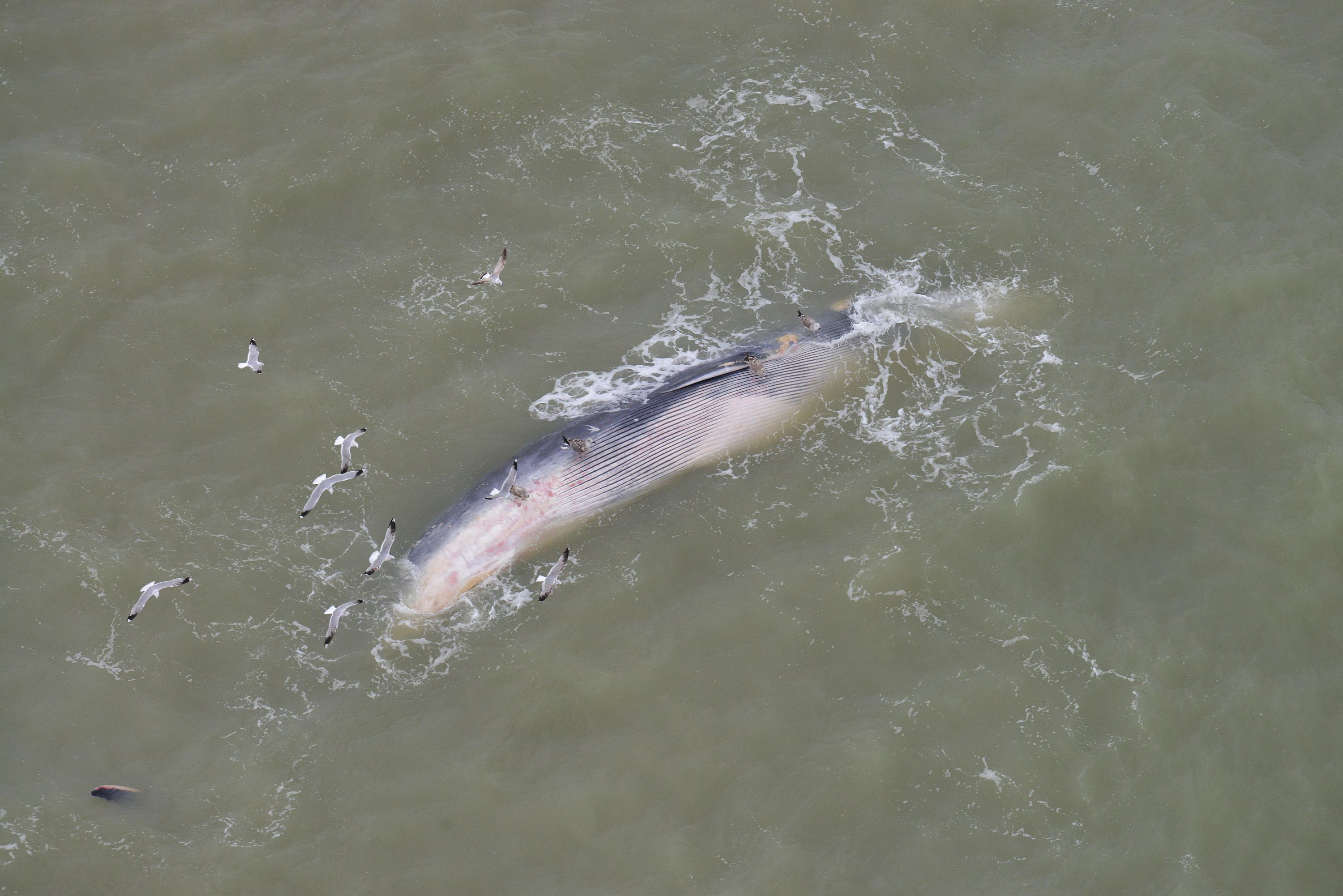
Researchers from the Operational Directorate Natural Environment of the Royal Belgian Institute of Natural Sciences predicted by means of simulations – which take into account sea currents, wind and waves – that the carcass would wash ashore between Oostende and De Haan during the night of 24 to 25 October or during the morning of 25 October. Because the carcass could pose a danger to shipping, and because some parts of the coast are difficult to access for heavy equipment, the MRCC Oostende (Maritime Rescue and Coordination Centre) and the local authorities decided to beach it in a controlled manner. A rescue ship pulled the carcass to the beach near Vosseslag, de Haan, where it arrived around 2h00 at night.
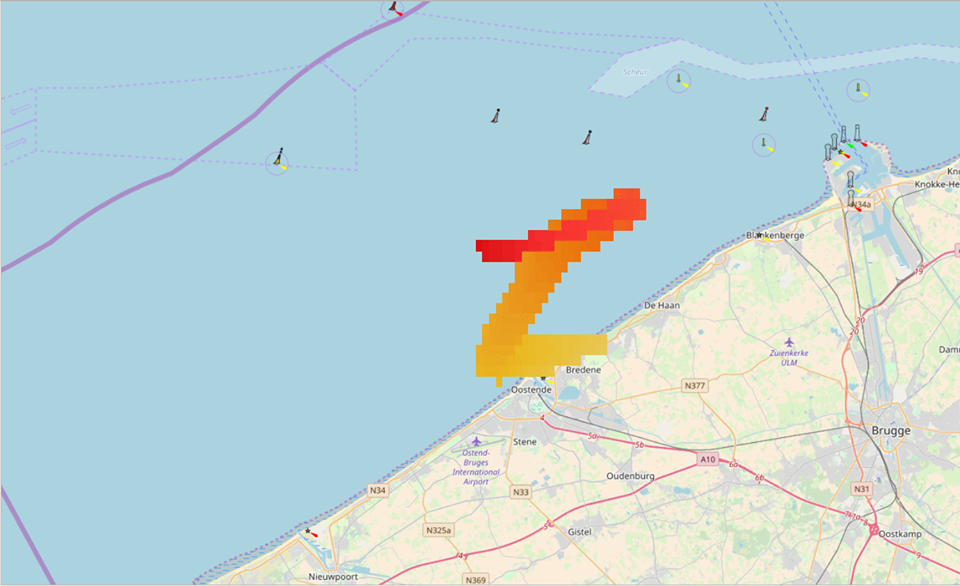
Quite Fresh
The impressive remains of the almost mature male were still relatively fresh. He must have died about 48 hours before the start of the autopsy. But the decomposition of large whales goes very fast. A connection with the common whale filmed five days earlier in the Netherlands could not be confirmed, nor with the sighting of a ‘whale’ on 23 October near the Buitenratel sand bar.
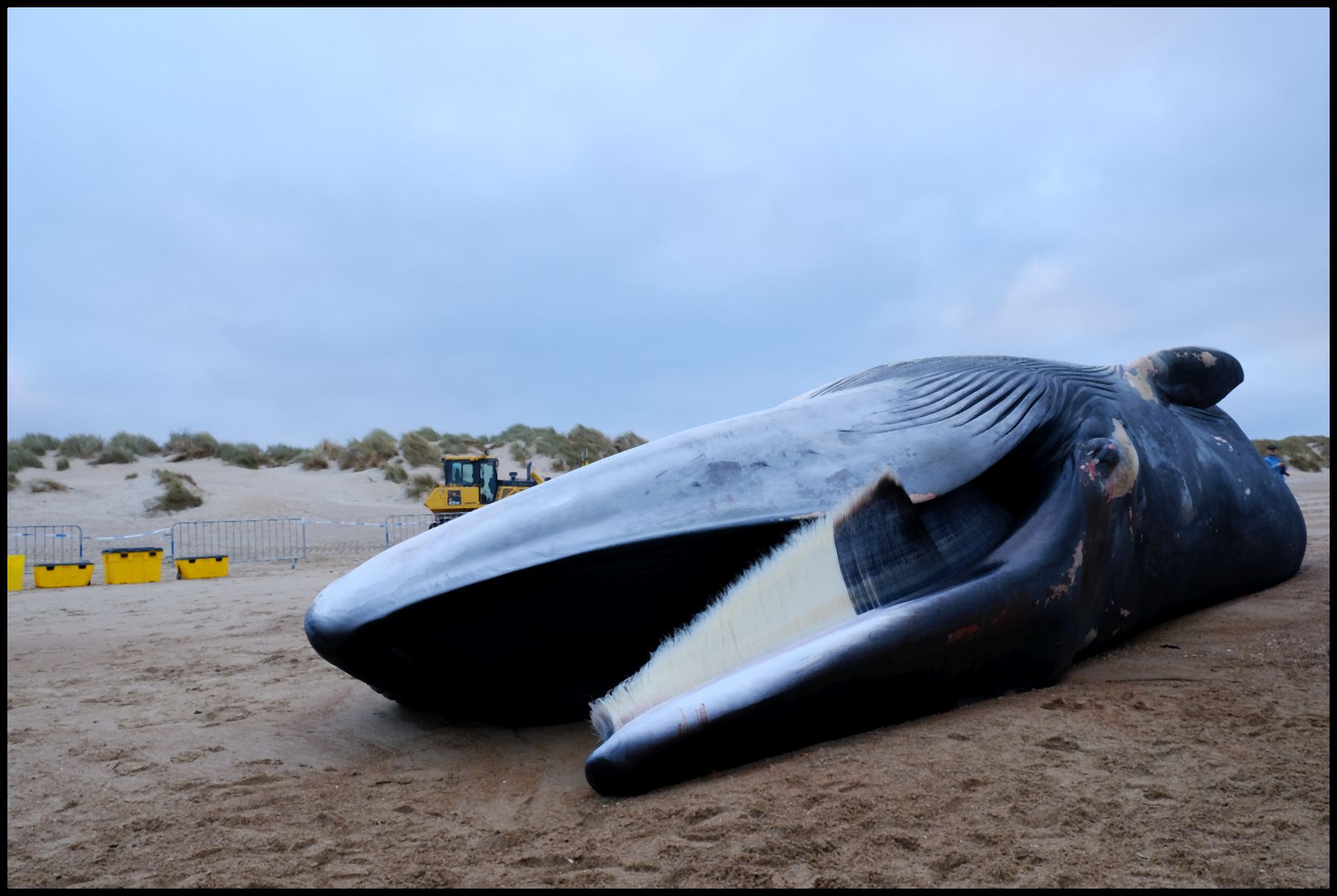
The autopsy, carried out by veterinarians and students from the universities of Ghent and Liège and biologists from the RBINS, could not prove that a human factor contributed to the death of the animal. The fin whale was very emaciated, with a very thin layer of blubber and an almost empty stomach. Additional analyses for some viruses – morbilli, herpes, influenza and brucella – were negative. So the animal probably died a natural death.

The animal weighed an estimated 30,000 kilograms. Of this, 24 tons were transported by the Civil Protection to the company Rendac for processing. At the request of the municipality of De Haan, the gigantic lower jaw was spared. It will be exhibited locally after treatment by Ghent University. The university museum of Ghent University will preserve one of the pectoral fins. Numerous tissue samples have also been collected, as well as parasites that lived on the fin whale.
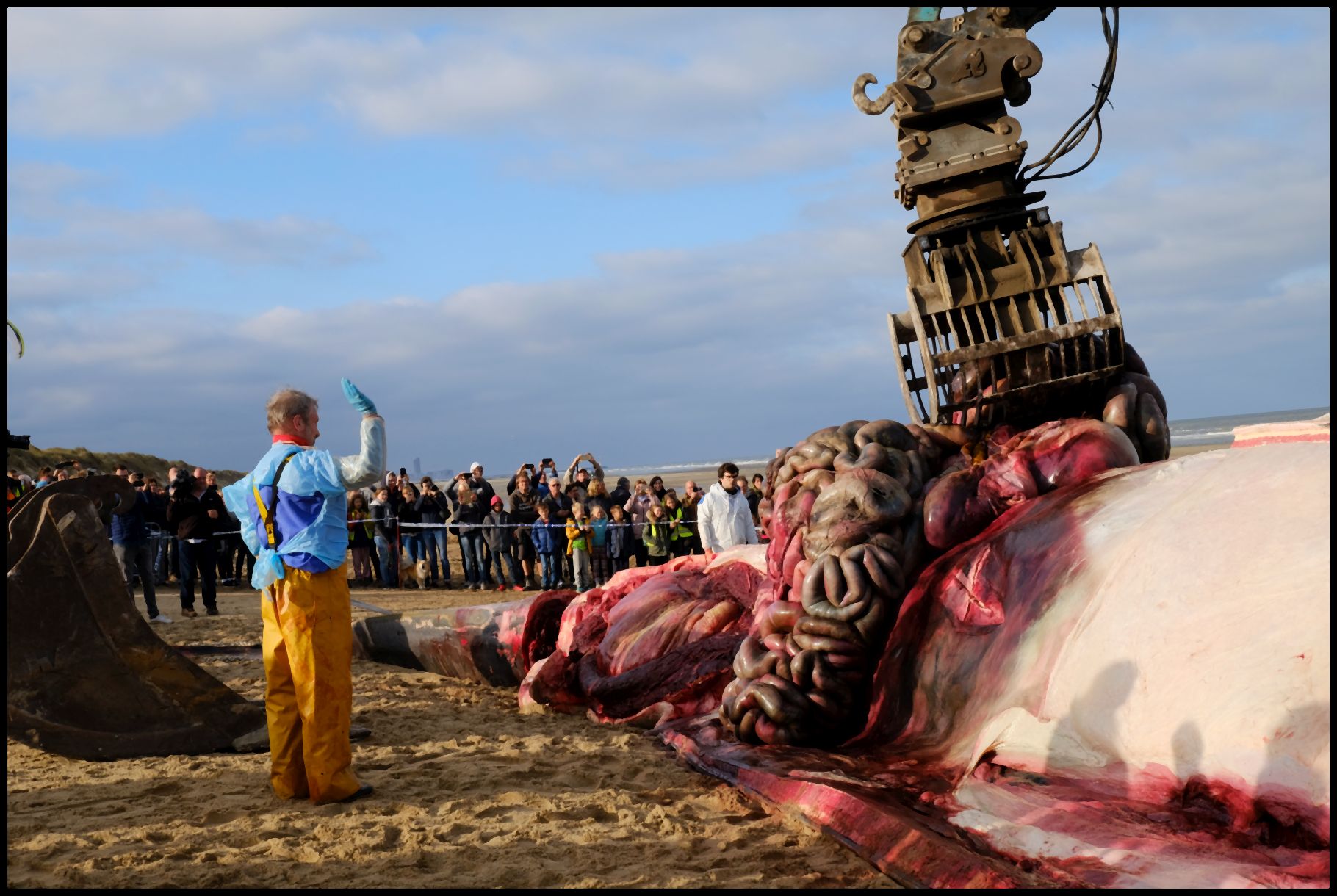
Rare
Fin whales are rarely seen in the North Sea. The previous stranding dates from 1 November 1997. After that, dead fin whales were brought into Belgian ports twice at the bow of a ship, in 2009 in Antwerp and in 2015 in Ghent.
The cooperation between the various services for the stranding, autopsy and removal of the dead fin whale went very well: The Agency for Maritime Services and Coast (Shipping Assistance Division, Maritime Rescue and Coordination Centre, DAB Vloot), Ship Support, Shipping Police, the Services of the Governor of the Province of West Flanders, Civil Protection, the FPS Public Health, Food Chain Safety and Environment, the Cabinet of the Secretary of State for the North Sea, the local authorities of De Haan, the universities of Ghent and Liège and the Royal Belgian Institute of Natural Sciences.

